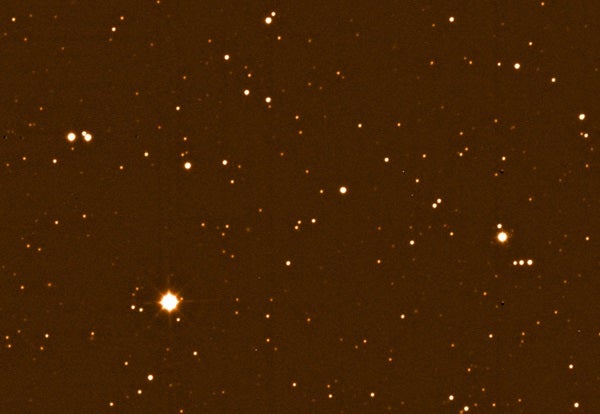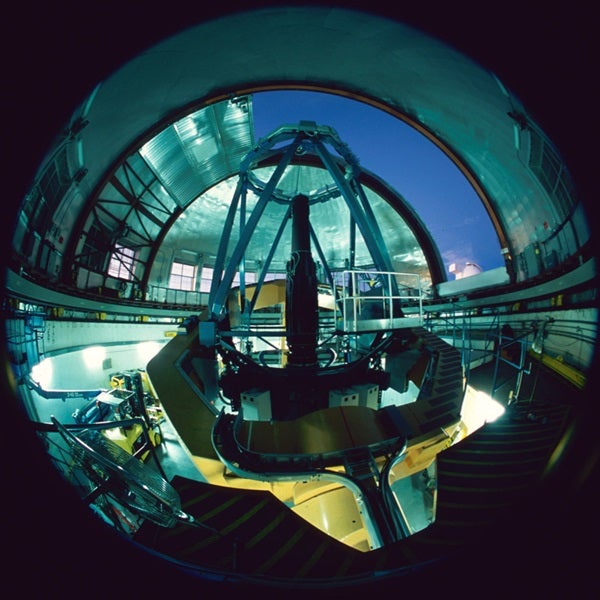The United Kingdom Infrared Telescope’s (UKIRT) Wide Field Camera (WFCAM) atop Hawaii’s Mauna Kea has reached a major milestone. WFCAM took its one-millionth observation October 31, after more than two years of observations of the infrared universe. The millionth frame was part of a program aiming to find planets around low-mass stars.
The millionth observation actually means four million individual infrared frames, because WFCAM focuses infrared light onto four detectors, which take an image for each observation.
Brad Cavanagh, the software engineer responsible for WFCAM data at the Joint Astronomy Centre (JAC), said “a million WFCAM observations corresponds to about sixteen trillion pixels. If you had a six-megapixel digital camera and took one picture every second, you would have to take 2,796,200 pictures, and it would take over 32 days to do it. The one million observations add up to a little over 60 terabytes of data. If you wanted to put all of the data on CDs you’d need to buy 98,461 of them, and they’d make a stack over 387 feet high, which is over one and a quarter football fields long. If you wanted to download all the data to your computer over a 2 megabit/sec cable internet connection it would take eight years and 41 days.”
UKIRT with WFCAM is undertaking both a world-leading sky survey in the infrared (UKIRT Infrared Deep Sky Survey, UKIDSS), a large range of specific projects for individual astronomers, and most recently, a set of very large campaign projects aimed at a range of scientific targets including Earth-like planets and star formation in the early universe. Dr. Tom Kerr, the WFCAM instrument scientist, said that the mass production of astronomical data was exactly what WFCAM was intended for, “WFCAM, coupled with UKIRT, has been delivering enormous amounts of data over the past two years. The great majority of the images have formed part of the UKIRT Infrared Deep Sky Survey, or UKIDSS — an extraordinarily ambitious 7-year program to survey the universe at Infrared wavelengths, going to unprecedented depths to detect both the closest objects outside the solar system, the most distant galaxies and quasars, and plenty in between.
Our millionth WFCAM observation, taken the other night, in fact contributed to a different but equally exciting project surveying relatively local, faint red stars looking for transits of exoplanets from multiple Jupiters down to small, rocky bodies like the Earth.”
These stars are much better observed in the infrared, because they have much lower temperatures than stars like our sun. Because they are also very small and relatively faint, the signature of a planet transiting across the face of the disk is much easier to detect — it has greater contrast and lasts an hour or two. Given the comparatively large field of view of WFCAM, there are not only expected to be good numbers of transits, but there are also hundreds of non-variable stars in each field, by comparison with which the very slight brightness dips due to the transits can be precisely measured. The one-millionth observation by itself contains thousands of stars per chip.











